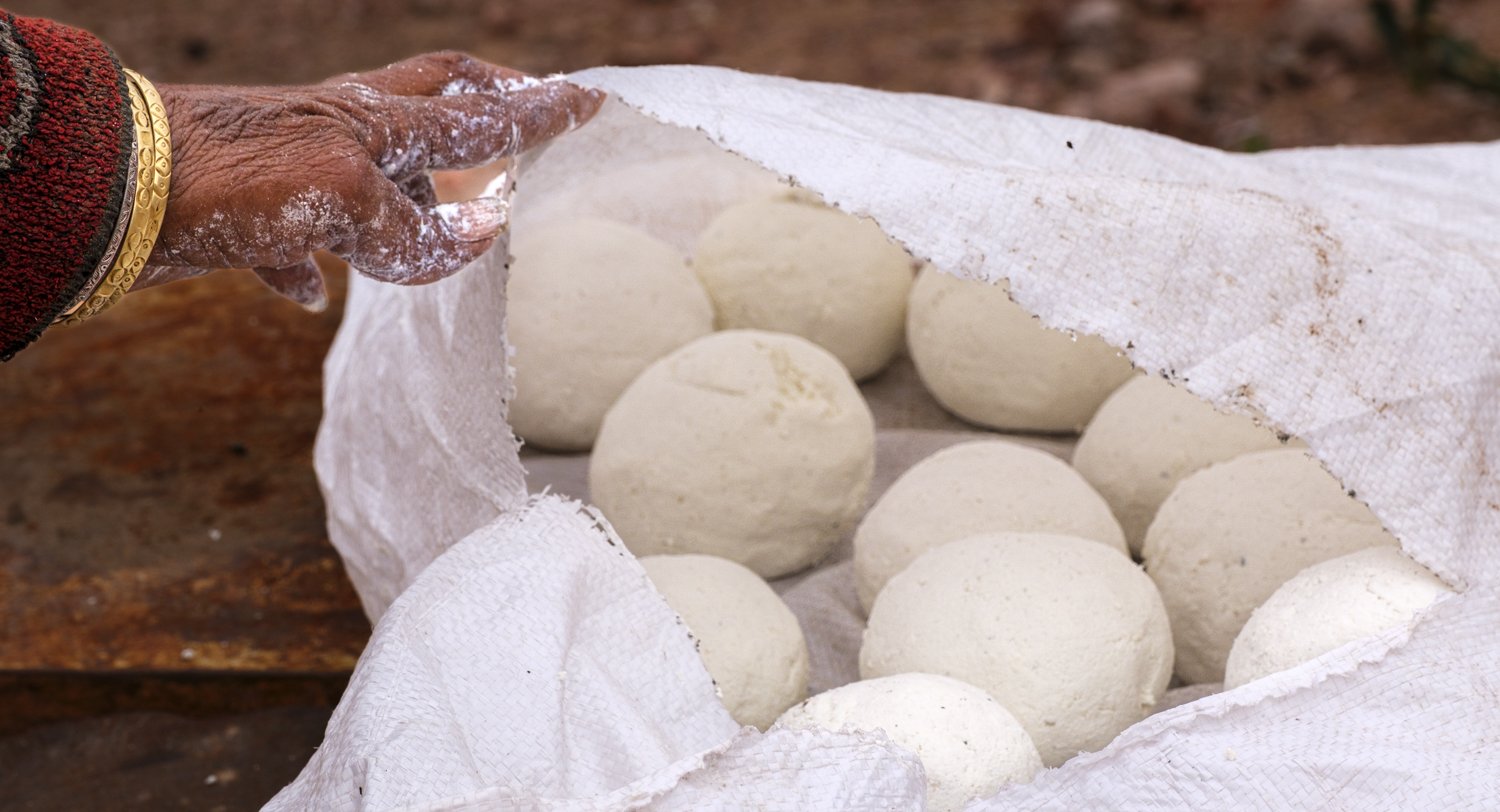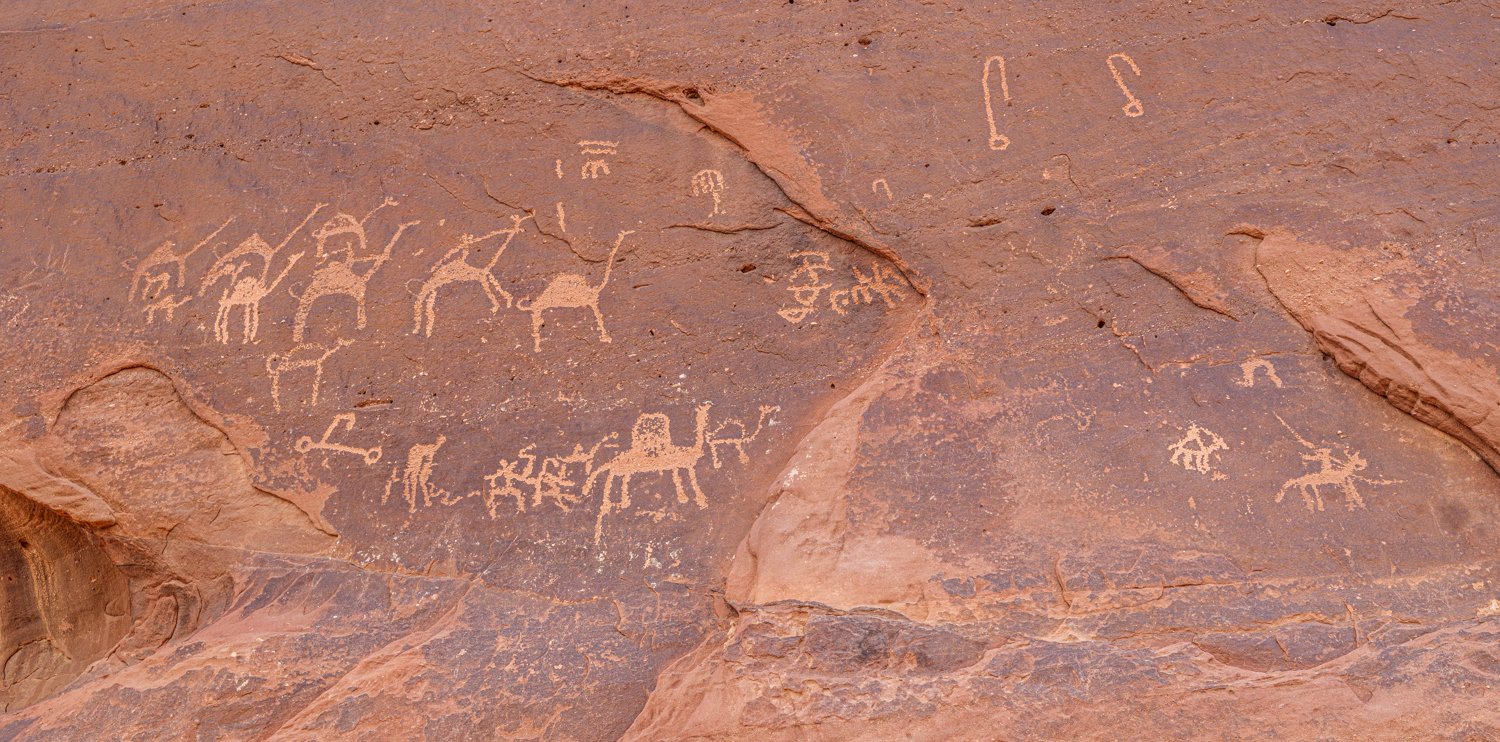Jordan
2023
-
Jordan offers a photographer superb subjects including landscapes, street scenes, historical/archeological objects and sites, as well as food, especially “mezze”. Among the locations represented in this gallery are Amman, Jaresh, Madaba, the Dana Biosphere Reserve, Wadi Rum, Mount Nebo, “Little Petra” and of course, Petra. Before evaluating traveling to Jordan I had of heard of the famous Petra, one of the Seven Wonders of the World, but was not knowledgeable about the other locales.
The Amman Citadel, which goes back to 1800 BC, has remnants (three fingers of a hand) of a colossal 39-foot-tall statue of Hercules (161-166 AD) and its museum displays the stunning double-headed Ain Ghazal statue (7200-6250 AD), one of the oldest human statues. The Citadel is a great spot from which to get good photos of the 6,000 seat second-century Roman Theater and adjacent Roman forum down below.
Jerash is one of the best preserved and largest Greco-Roman cities in the Middle East (sometimes referred to as the “Pompei of the Middle East “). It was occupied by 7500 BC (beginning of the Neolithic period that ended in 5500 BC) and its settlements date back to 3200-1200 BC (the Bronze Age). Its photogenic ruins cover over 200 acres and include: numerous temples along the Cardo, its ¾ mile main road for chariots with curbs and elevated sidewalks for people; the magnificent large oval forum at one end of the Cardo; a circular Roman food market with stalls; and, a Roman theater still in use.
Ajoun Castle, which is picturesquely perched on a hilltop 3,000 feet above sea level, was built by Muslims to control Bedouins and protect against the Crusaders. It has been restored enough to convey what daily life and battles might have been like here during the 12th to 19th centuries. Some of the interior rooms are interesting and large but have minimal light, making photography challenging.
Madaba has a church from the 6th century AD with a unique feature: a mosaic map on its floor that depicts an area between Lebanon and the Nile Delta and from the western Mediterranean to deserts in the East. A large area at the map’s center is dedicated to Jerusalem. The colorful map, the oldest known geographic mosaic, shows and labels about 150 towns and villages.
The narrow streets of Madaba presented opportunities to photograph the daily life of locals. Most of the women wore traditional hijabs while the men wore dishdashis, which are traditional long-sleeved ankle length robes, and a head-covering scarf called a keffiyeh or shemagh, which in Jordan is usually red and white. To a western eye, their omnipresent cell phones conflicted with their old-fashioned looking attire.
The Dana Biosphere Reserve has wild mountainous and desert landscapes that have been occupied since around 4000 BC. One camera friendly experience there was going into a non-private part of a Bedouin home (large tents made with sheets of different and frequently colorful materials) of a husband and his two wives. We watched as he kneaded and shaped dough, which he then cooked just outside his tent by burying the dough in hot ashes and sand below a small fire of sticks. The resulting Bedouin flat bread, called Abud, which has been made this way for over 14,000 years, was delicious.
His face had great character, and he was comfortable with my photographing him. As we said goodbye, we touched upon our respective ages. Although he was much (20 years) younger than I, he looked older. With a grin on his face and in broken English he said his premature aging was no doubt because he had two wives while I had only one.
At another of this family’s tents, one of his two wives was making balls of cheese from fresh milk from their goats. She offered me a taste; it was delicious. Although she allowed me to take pictures of the cheese balls, she did not want me to photograph her face and of course I respected that.
Another traditional Bedouin tent just down the path showed a sign of the 21st century: a dish for cell/internet service. The source of the electric power, perhaps a solar panel, was not visible. Another picture worthy meeting, or perhaps clash, of old and new worlds was a herd of camels walking on and taking over a stretch of brand-new paved highway. Travelers in vehicles had to wait their turn.
“Little Petra” is a narrow, winding red rock cavern that in ancient times was where caravans going to Petra could stock up on water, conduct business and await admittance to Petra. As the photos show, the cavern has rooms/halls carved into its walls; they were used for dining and religious purposes. The site prepares visitors for what they will see, on a much larger scale, at Petra. Parts of the Little Petra cavern were, to the dismay of many visitors, blocked by a stage and other equipment set up by an oligarch preparing a party for his daughter. Near Little Petra is a remarkable cistern built by Nabataeans about 2,000 years ago with a capacity of three million gallons; a dam and hand-carved channels directed rainwater from a mountain to the cistern.
It is difficult to capture in words the art, beauty, scale and stunning nature of Petra including its tall red/brown/pink cliffs into which the Nabataeans built houses, tombs, a large theater and other structures. It has been inhabited since prehistoric times. After walking eight miles through Petra over ten hours, it was easy to understand why it is considered one of the Seven Wonders of the World. I had previously been to all the others; while Petra was the last, it was far from the least.
A new, modern and architecturally beautiful Museum has a well displayed collection of artifacts, statues, carvings, jewelry, tools, friezes, etc. from the Petra area. Some items go back to the Stone Age. One extraordinary piece is a multi-strand necklace with over 2,580 beads of turquoise and other stones and a mother-of-pearl divider from about 7500-6800 BC. It was worn by an 8 to 10-year-old girl.
Hopefully the photographs of Petra and of a few of the Museum’s pieces convey at least a little sense of Petra.
Not far from Petra is Wadi Rum, a protected area of 200,000 acres of desert sands, surrounded by majestic orange/red/purple rock formations. Some think of Wadi Rum as the Valley of the Moon, while others refer to it as “Mars on Earth.” It is not surprising that Hollywood has used this location to film sci-fi movies of events that were meant to have taken place on Mars.
It was remarkable to stop beside the base of a cliff or tall rock formation to see, only a few feet away and at just above eye level, petroglyphs inscribed thousands of years ago by Nabataeans and others. They are well preserved despite having been exposed to the elements for all that time. Some are of human figures while others are of animals like camels, ibex and horses. There are also symbols that look like music notes.
Standing at the top of Mt. Nebo, 3,000 feet above sea level, gives an opportunity to photograph nearby parts of Isreal and the Dead Sea, at least on a clear day. More significant, this is the place from which Moses saw for the first and only time the Land of Canaan (the Promised Land), that God had said he would not enter. Moses did not get to the Promised land and died at Mt. Nebo but was buried elsewhere.
Mt. Nebo has ancient mosaics and an adjoining monastery. The most remarkable of the mosaics is the fully intact, signed (three artists) and dated (530 AD) floor mosaic known as the Diakonikon Mosaic. With vibrant colors, it depicts hunting and pastoral scenes with, among others, shepherds, ostrich, zebu, a mounted hunter with a dog killing a wild boar, lions, a bear being speared, a dromedary with spotted fur (perhaps an exotic giraffe) and a zebra. It was only found in 1976, about three feet underneath another old mosaic floor that is now displayed on a wall.
Other photos show the Dead Sea glowing at sunset and the West Bank and Israel basking in the golden light of sunrise.






























































































































